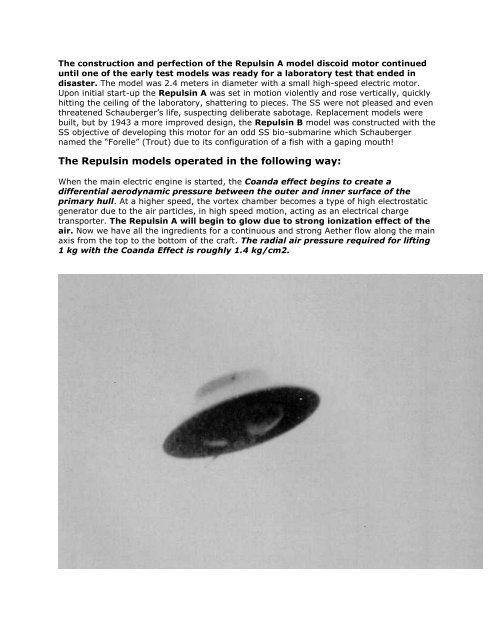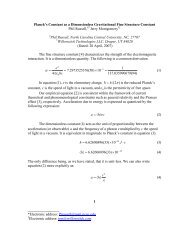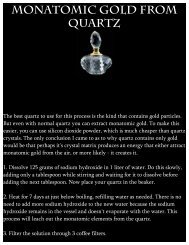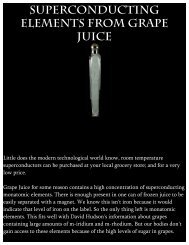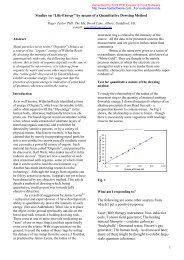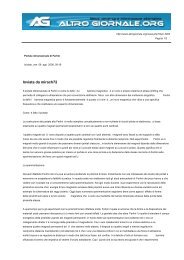Viktor Schauberger
Viktor Schauberger
Viktor Schauberger
Create successful ePaper yourself
Turn your PDF publications into a flip-book with our unique Google optimized e-Paper software.
The construction and perfection of the Repulsin A model discoid motor continued<br />
until one of the early test models was ready for a laboratory test that ended in<br />
disaster. The model was 2.4 meters in diameter with a small high-speed electric motor.<br />
Upon initial start-up the Repulsin A was set in motion violently and rose vertically, quickly<br />
hitting the ceiling of the laboratory, shattering to pieces. The SS were not pleased and even<br />
threatened <strong>Schauberger</strong>’s life, suspecting deliberate sabotage. Replacement models were<br />
built, but by 1943 a more improved design, the Repulsin B model was constructed with the<br />
SS objective of developing this motor for an odd SS bio-submarine which <strong>Schauberger</strong><br />
named the “Forelle” (Trout) due to its configuration of a fish with a gaping mouth!<br />
The Repulsin models operated in the following way:<br />
When the main electric engine is started, the Coanda effect begins to create a<br />
differential aerodynamic pressure between the outer and inner surface of the<br />
primary hull. At a higher speed, the vortex chamber becomes a type of high electrostatic<br />
generator due to the air particles, in high speed motion, acting as an electrical charge<br />
transporter. The Repulsin A will begin to glow due to strong ionization effect of the<br />
air. Now we have all the ingredients for a continuous and strong Aether flow along the main<br />
axis from the top to the bottom of the craft. The radial air pressure required for lifting<br />
1 kg with the Coanda Effect is roughly 1.4 kg/cm2.


